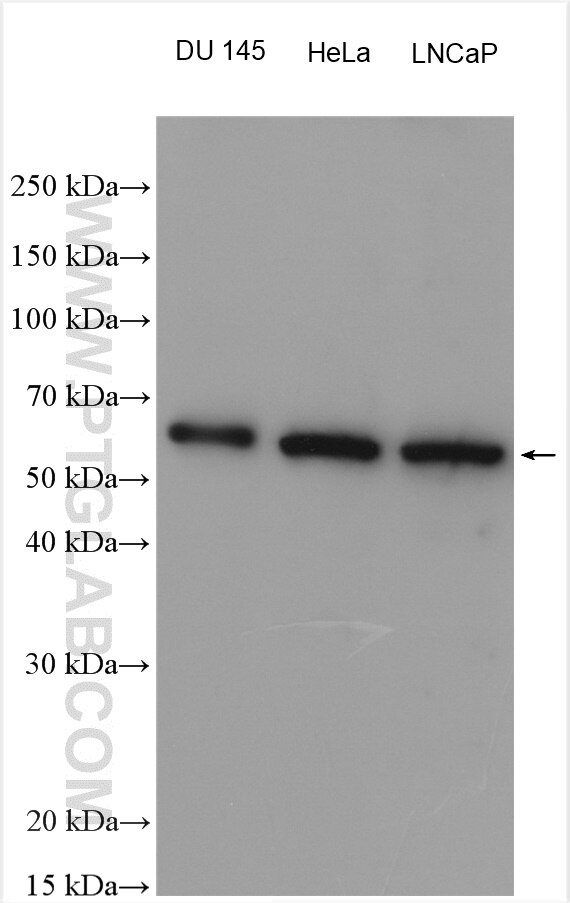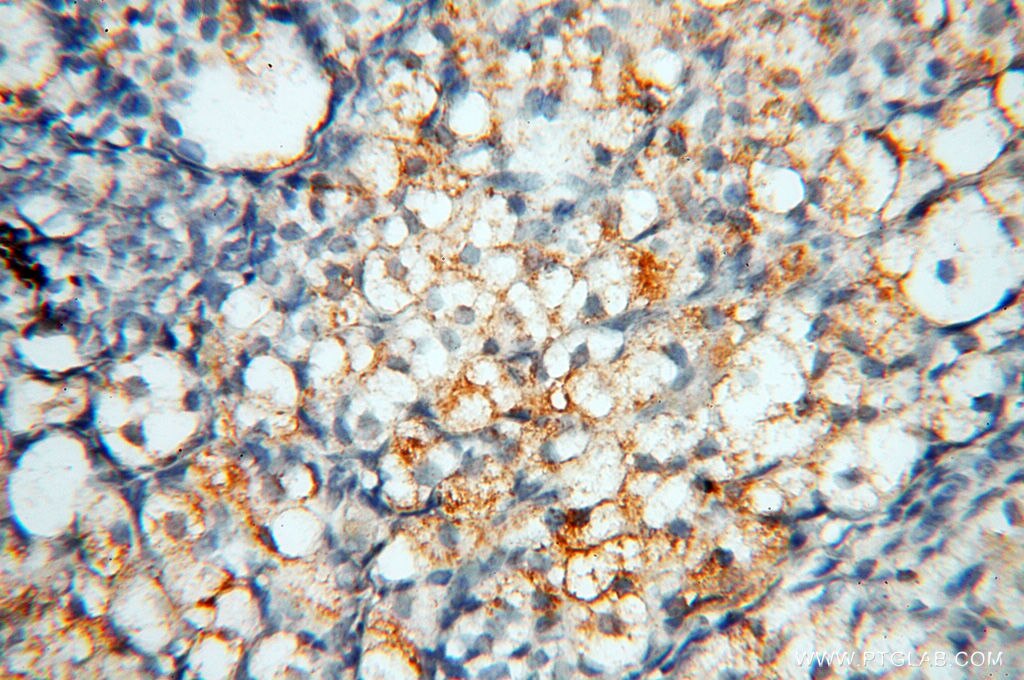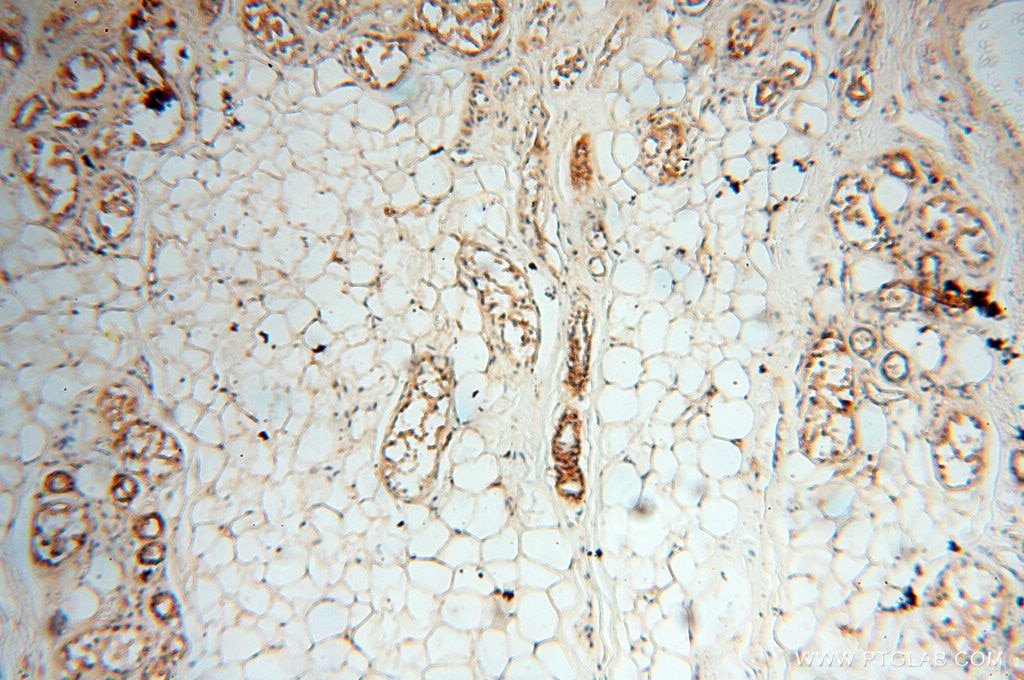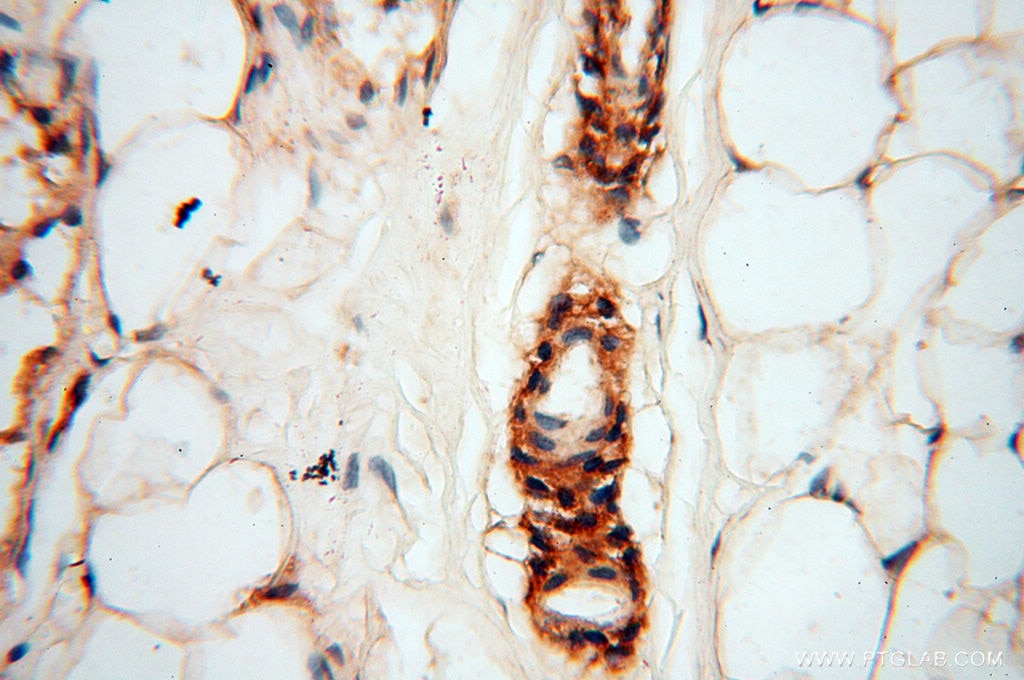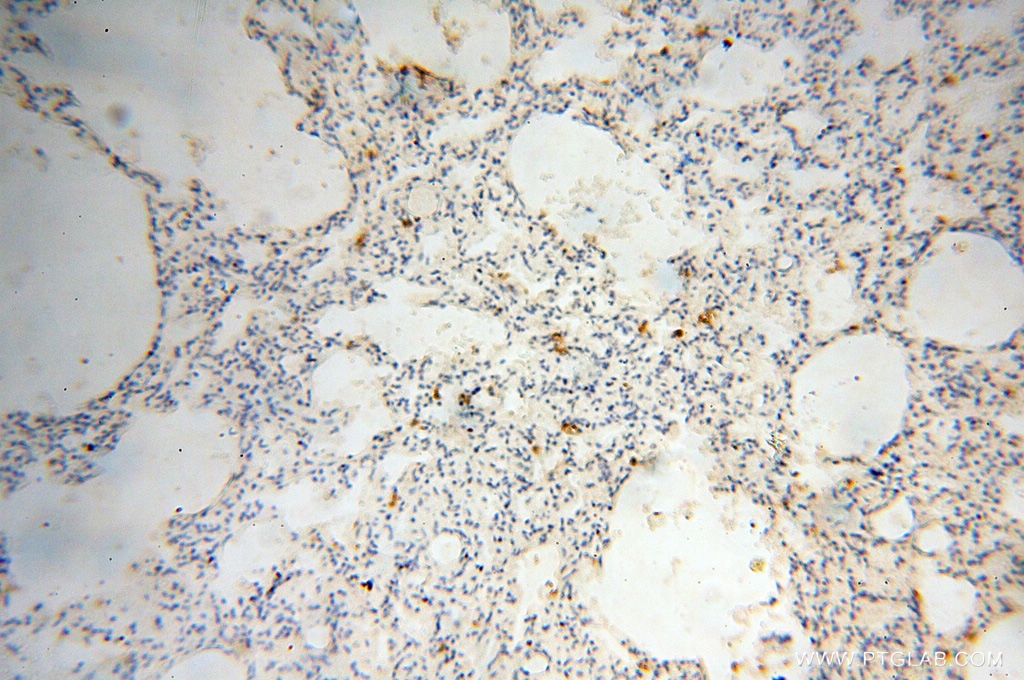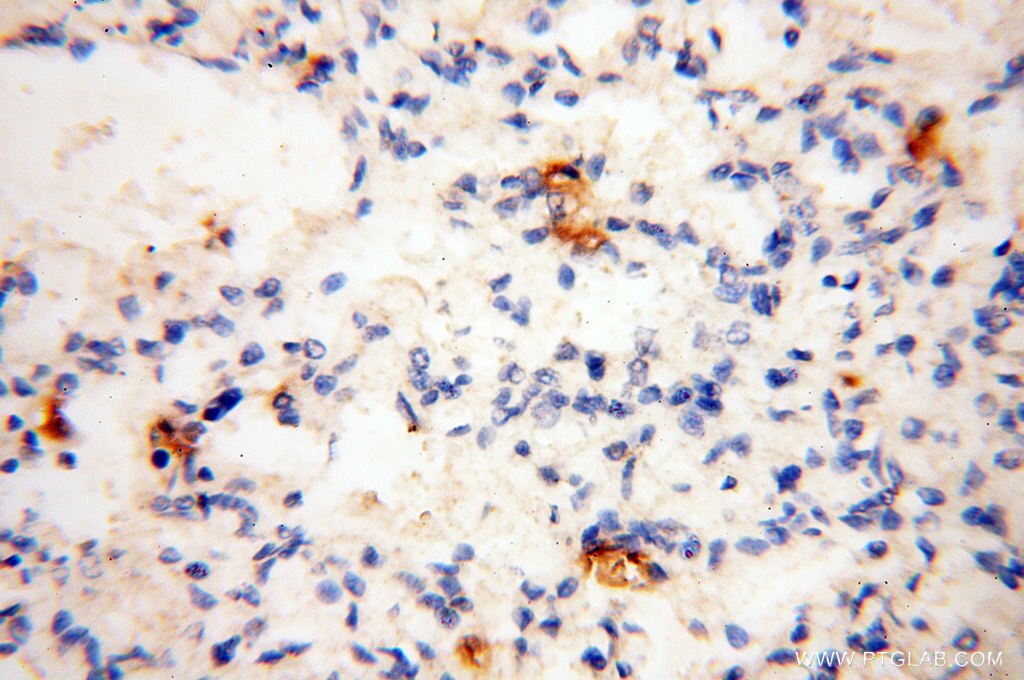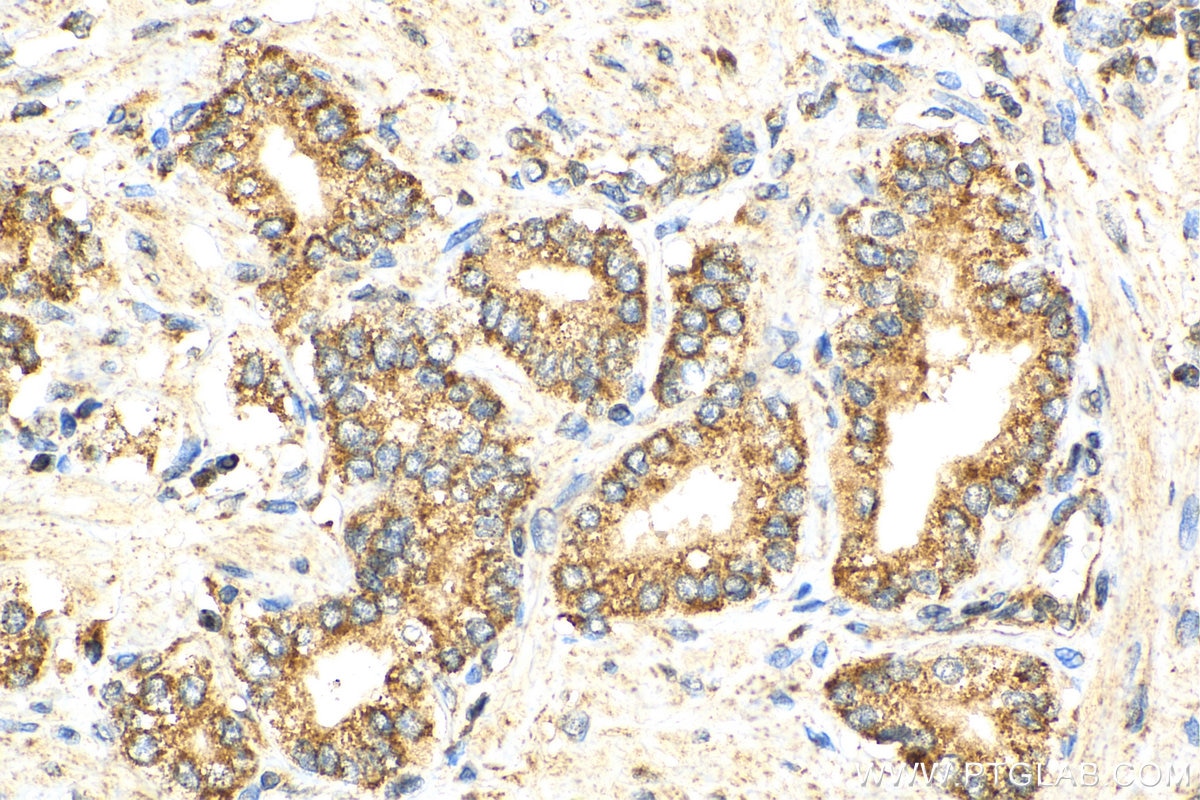- Featured Product
- KD/KO Validated
uPA/Urokinase Polyklonaler Antikörper
uPA/Urokinase Polyklonal Antikörper für IF, IHC, IP, WB, ELISA
Wirt / Isotyp
Kaninchen / IgG
Getestete Reaktivität
human, Maus, Ratte und mehr (1)
Anwendung
WB, IP, IHC, IF, CoIP, ELISA
Konjugation
Unkonjugiert
Kat-Nr. : 17968-1-AP
Synonyme
Galerie der Validierungsdaten
Geprüfte Anwendungen
| Erfolgreiche Detektion in WB | DU 145-Zellen, A375-Zellen, HeLa-Zellen, humanes Hirngewebe, LNCaP-Zellen |
| Erfolgreiche IP | HeLa-Zellen |
| Erfolgreiche Detektion in IHC | humanes Mammakarzinomgewebe, humanes Eierstockgewebe, humanes Hautgewebe, humanes Lungengewebe, humanes Prostatakarzinomgewebe Hinweis: Antigendemaskierung mit TE-Puffer pH 9,0 empfohlen. (*) Wahlweise kann die Antigendemaskierung auch mit Citratpuffer pH 6,0 erfolgen. |
| Erfolgreiche Detektion in IF | HeLa-Zellen |
Empfohlene Verdünnung
| Anwendung | Verdünnung |
|---|---|
| Western Blot (WB) | WB : 1:1000-1:8000 |
| Immunpräzipitation (IP) | IP : 0.5-4.0 ug for 1.0-3.0 mg of total protein lysate |
| Immunhistochemie (IHC) | IHC : 1:50-1:500 |
| Immunfluoreszenz (IF) | IF : 1:20-1:200 |
| It is recommended that this reagent should be titrated in each testing system to obtain optimal results. | |
| Sample-dependent, check data in validation data gallery | |
Veröffentlichte Anwendungen
| KD/KO | See 1 publications below |
| WB | See 29 publications below |
| IHC | See 9 publications below |
| IF | See 4 publications below |
| CoIP | See 1 publications below |
Produktinformation
17968-1-AP bindet in WB, IP, IHC, IF, CoIP, ELISA uPA/Urokinase und zeigt Reaktivität mit human, Maus, Ratten
| Getestete Reaktivität | human, Maus, Ratte |
| In Publikationen genannte Reaktivität | human, Maus, Ratte, Rind |
| Wirt / Isotyp | Kaninchen / IgG |
| Klonalität | Polyklonal |
| Typ | Antikörper |
| Immunogen | uPA/Urokinase fusion protein Ag11813 |
| Vollständiger Name | plasminogen activator, urokinase |
| Berechnetes Molekulargewicht | 431 aa, 49 kDa |
| Beobachtetes Molekulargewicht | 54 kDa |
| GenBank-Zugangsnummer | BC013575 |
| Gene symbol | PLAU |
| Gene ID (NCBI) | 5328 |
| Konjugation | Unkonjugiert |
| Form | Liquid |
| Reinigungsmethode | Antigen-Affinitätsreinigung |
| Lagerungspuffer | PBS mit 0.02% Natriumazid und 50% Glycerin pH 7.3. |
| Lagerungsbedingungen | Bei -20°C lagern. Nach dem Versand ein Jahr lang stabil Aliquotieren ist bei -20oC Lagerung nicht notwendig. 20ul Größen enthalten 0,1% BSA. |
Hintergrundinformationen
PLAU(Urokinase-type plasminogen activator) is also named as uPA and belongs to the peptidase S1 family.UPA initiates a proteolytic cascade, which degrades extracellular matrix during tissue growth and remodelling.The secreted proform of UPA is activated after binding to a specific high affinity cell surface receptor. Secreted UPA is exposed to rapid inactivation in the pericellular space by plasminogen activator inhibitor-1 (PAI-1), which is stored in the extracellular matrix bound to vitronectin(PMID:9665342).It has 2 isoforms produced by alternative splicing. Defects in PLAU are the cause of Quebec platelet disorder (QPD).
Protokolle
| Produktspezifische Protokolle | |
|---|---|
| WB protocol for uPA/Urokinase antibody 17968-1-AP | Protokoll herunterladen |
| IHC protocol for uPA/Urokinase antibody 17968-1-AP | Protokoll herunterladen |
| IF protocol for uPA/Urokinase antibody 17968-1-AP | Protokoll herunterladen |
| IP protocol for uPA/Urokinase antibody 17968-1-AP | Protokoll herunterladen |
| Standard-Protokolle | |
|---|---|
| Klicken Sie hier, um unsere Standardprotokolle anzuzeigen |
Publikationen
| Species | Application | Title |
|---|---|---|
Gastroenterology Inhibition of Plasmin Protects Against Colitis in Mice by Suppressing Matrix Metalloproteinase 9-mediated Cytokine Release From Myeloid Cells. | ||
J Exp Med PDGF-D activation by macrophage-derived uPA promotes AngII-induced cardiac remodeling in obese mice. | ||
Aging (Albany NY) Tertiary lymphoid structure stratifies glioma into three distinct tumor subtypes. | ||
Aging (Albany NY) NFAT5 directs hyperosmotic stress-induced fibrin deposition and macrophage infiltration via PAI-1 in endothelium. |
